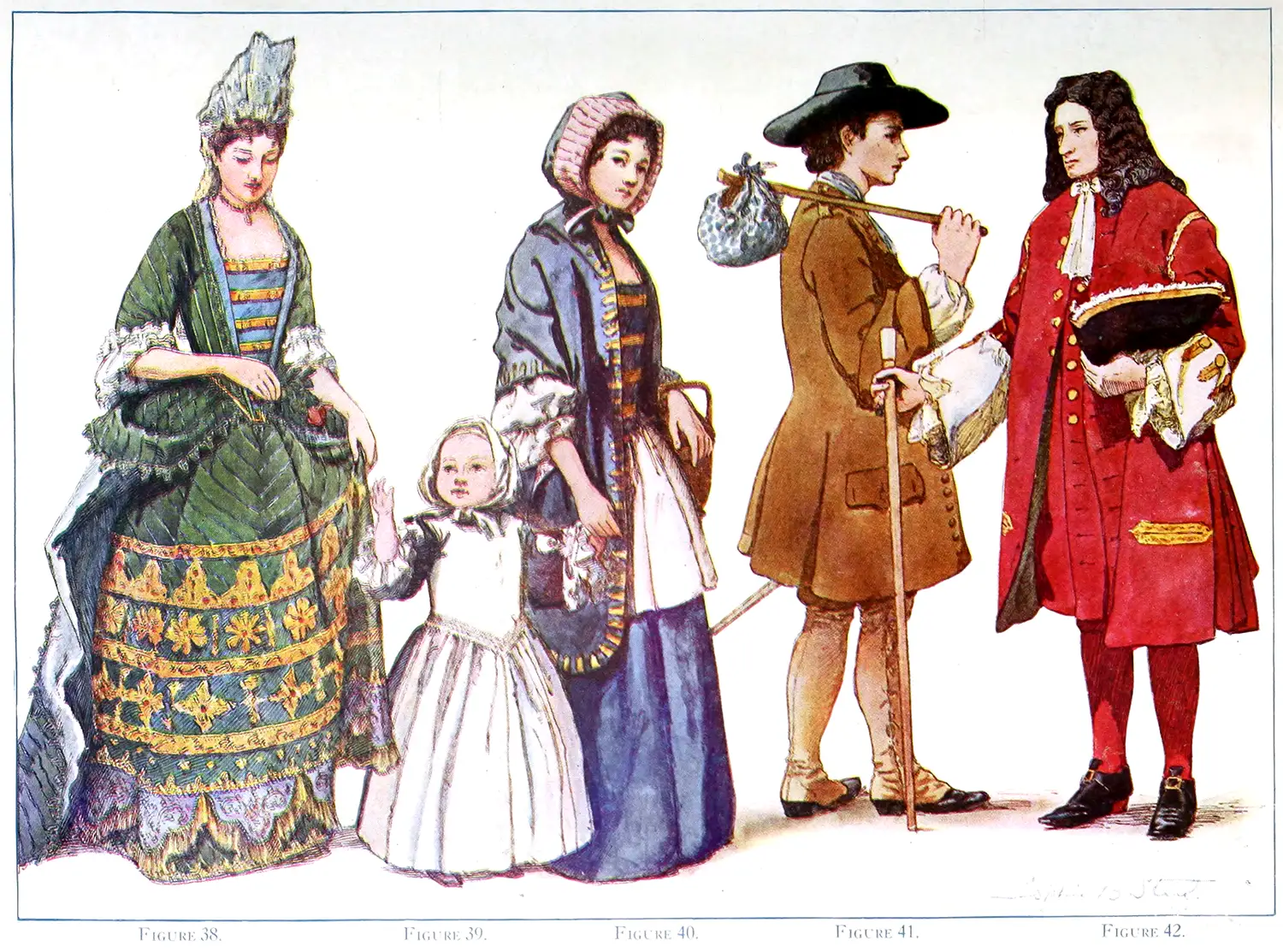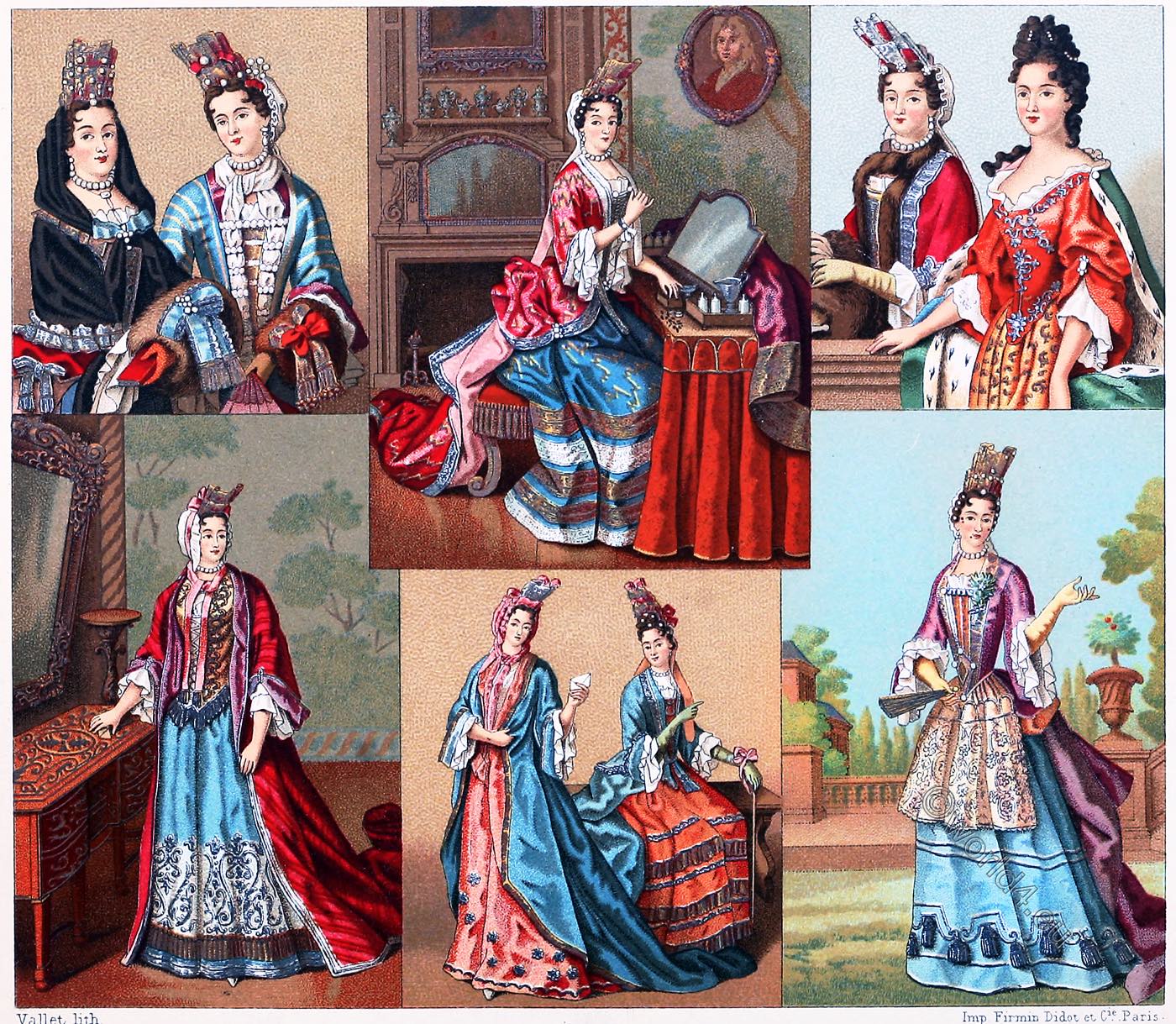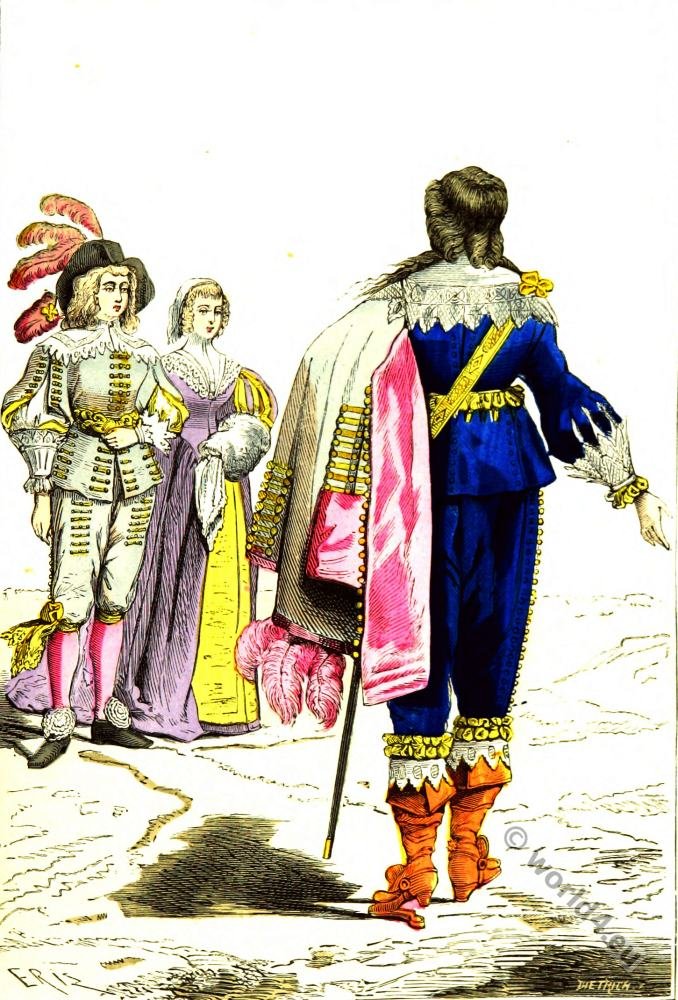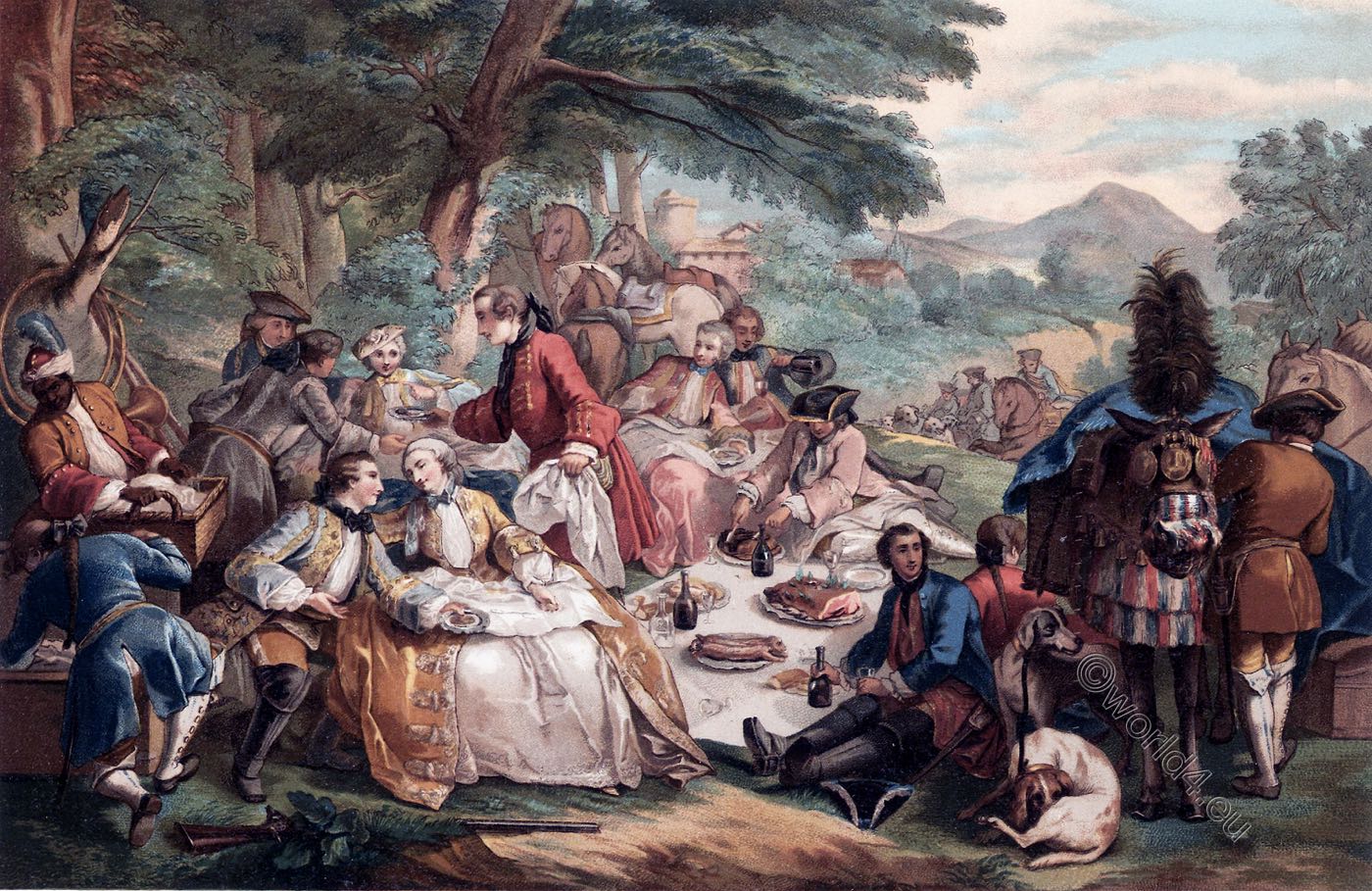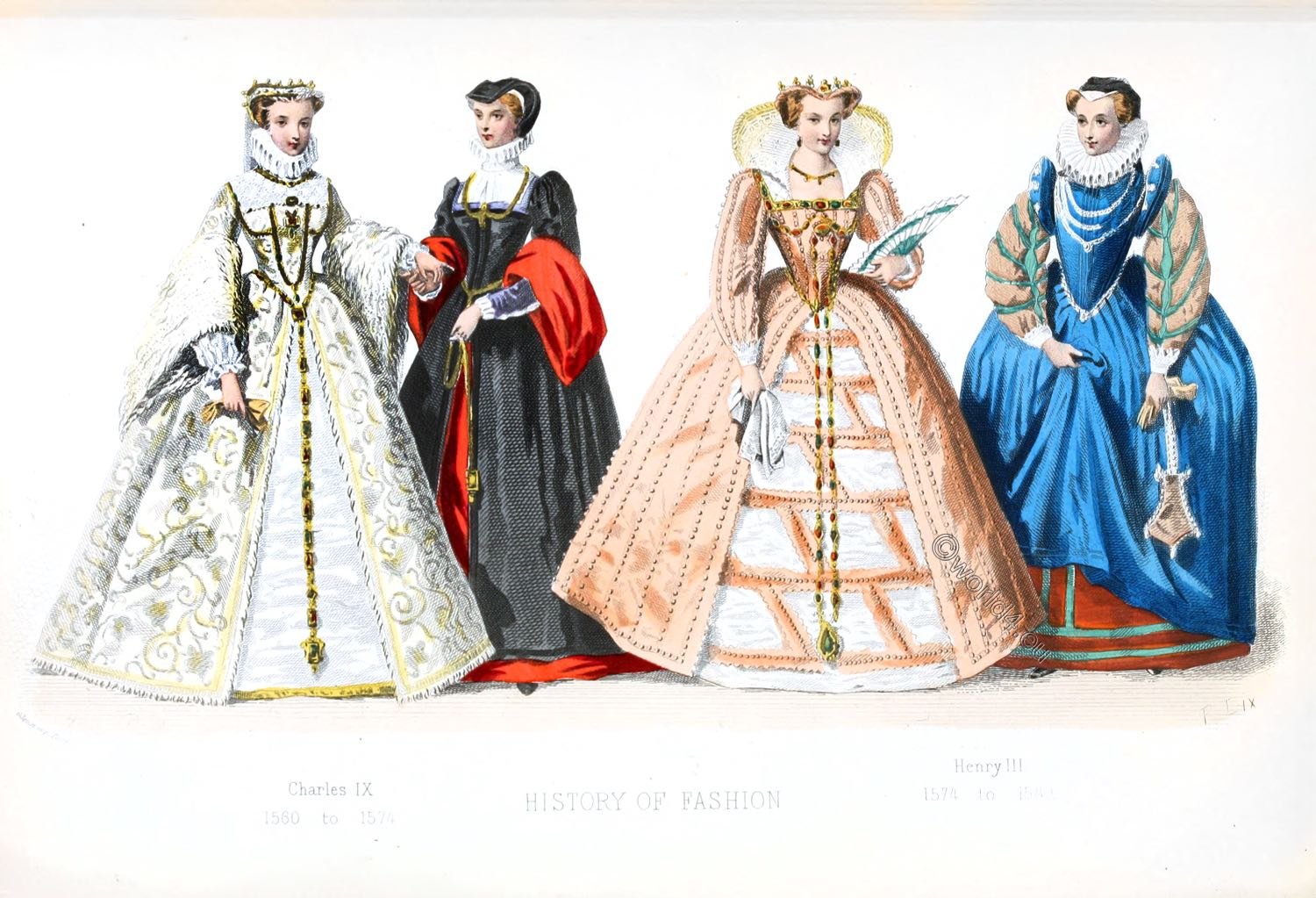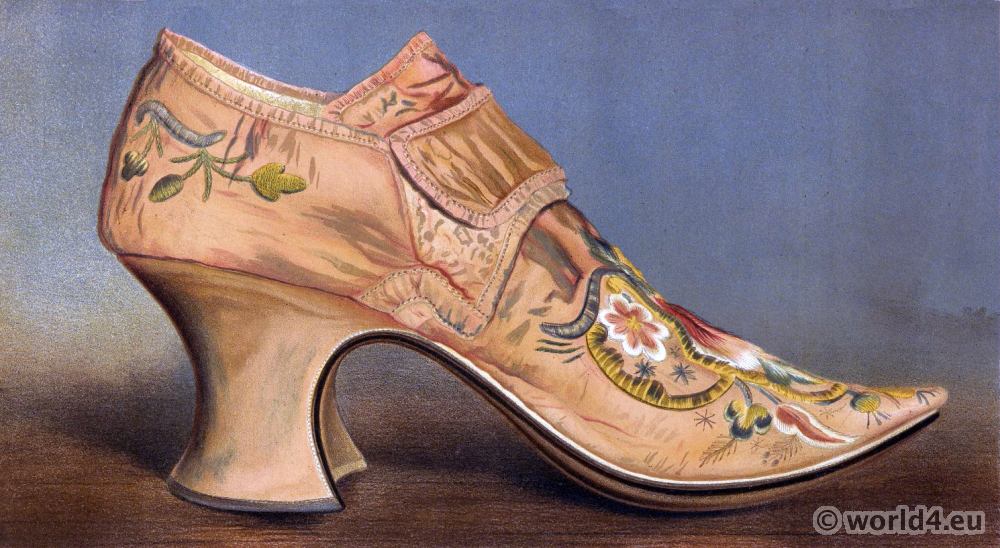REIGNS OF JAMES II – WILLIAM AND MARY.
James II of England (1633-1701), also James VII of Scotland, was crowned King of England, King of Scotland and King of Ireland on 23 April 1685. He succeeded his brother Charles II, whom he had previously served as Lord High Admiral and Commander-in-Chief of the Royal Navy and Lord High Commissioner of Scotland. After his then title Duke of York, the colony of Nieuw Amsterdam, surrendered by the Dutch without a fight, was renamed New York in 1664.
Mary II (1662-1694), was Queen of England, Scotland and Ireland. She was the eldest daughter of the future James II of England, was raised Protestant and married in 1677 to her cousin William III of Orange, governor of the United Netherlands. She was at her husband’s side when his pro-Catholic policies overthrew her father and ascended the English throne with him in 1689 in the course of the Glorious Revolution.
Costume of a lady of quality, tradeswoman, gentleman, worker and child, 17th c.
1685-1700
FIGURE 38 represents a lady of quality in the fashionable dress of William and Mary’s reign. Her gown is of rich silk trimmed with pretintailles *), or patterns cut out and laid on in rows across the petticoat. The flounce is edged with gold lace, also the gown which is looped back to show the underskirt. The stomacher is stiff and high; the sleeves loose, ending below the elbow with full ruffles of lace to match the commode head-dress, which has long streamers down the back. The hair is worn low and in soft loose curls on the forehead.
*) Ornament of cut-outs that was attached to women’s dresses.
FIGURE 39 is a typical dress of a child of the period. In this case it is of blue Holland, but silk and brocade were much used. Apron with bib is of white linen. Under the loose silken hood is a close-fitting cap of linen which was always worn by little children and sometimes beautifully embroidered.
FIGURE 40 shows the outdoor costume of a tradeswoman late in the seventeenth century. Her gown is of woollen fabric, paragon or linsey-woolsey, made with sleeves short enough to show the under-sleeves of white kenting which reach a little below the elbow. Her mantle is of durant (plain weave fabric of glazed woolen material) trimmed with bands of gimp. The hood is of black ducape and is the popular style of head covering of that period. It is lined and turned back round the face with sarsinet of a contrasting colour.
FIGURE 41.- A man on his way to work about the end of the seventeenth century in leggings of tanned leather and coat of frieze under which is a woolen jerkin. His wide-brimmed hat is of coarse felt.
FIGURE 42 represents a gentleman of William and Mary’s day, costumed in dark red broadcloth trimmed with gold braid and gold buttons. He wears a cravat of fine linen with lace ends, and carries his three-cornered hat edged with feathers, rather than crush his voluminous periwig. His shoes have small buckles rather high on the instep.
Source: Historic dress in America 1607-1800, by Elisabeth McClellan. Publishers: George W. Jacobs & Company, Philadelphia, 1904.
Discover more from World4 Costume Culture History
Subscribe to get the latest posts sent to your email.

